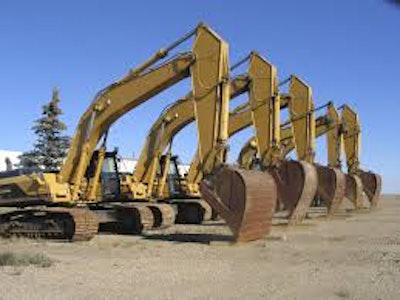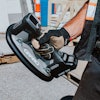
Selling your fleet assets at the end of its useful life is key to making a profit, especially for large, high-priced assets such as trenchers or other earthmoving equipment. I recently read a United Rentals investor presentation which had a graph that clearly illustrates the cash flow for one machine and how the rate of return is dependent on rental rates and the asset residual value. I have reproduced it below:
Chart #1
The example is for a machine purchased for $6,500. The rental revenue accumulates over the five-year life of the machine. At the end of the five years, the machine is sold. The total cash flow in this example is $6,142. Adding in what the used asset was sold for provides a cumulative cash flow of $11,291, which is not bad for a machine with an original purchase price of $6,500. It should be noted, however, that a 20- or 30-percent swing in the selling price at the end of the five years has a huge impact on the total cash flow. As the saying goes, “timing is everything.” Picking the right moment to sell your assets is extremely important.
To make life easy, a lot of rental companies (especially the large national companies) in the past sold their used machines at auctions. But the currently strong used market has resulted in many rental companies selling their machines directly to their customers. In essence, the rental companies are behaving more like equipment dealers, with the major difference being that dealers have a transactional business model and rental companies have a cash flow business model. It appears the two business methods are now becoming blended.
I was able to find rental company transaction data and it clearly illustrates the trend of rental companies selling more and more of their machines into the retail channel – either to their customers that rent the machines or to others. Since 2012, rental companies have changed their used equipment disposal pattern fairly dramatically. In 2012, 51 percent of rental companies sold their used rental fleet equipment at retail. That percentage increased to 56 percent in 2014, so far year-to-date. Interestingly, the quantity of rental companies selling their products at auctions declined from 25.7 percent in 2012 to 15.8 percent so far in 2014. In addition, a higher percentage of rental companies are trading in their machines when they purchase new ones.
Chart #2
One reason rental companies are selling more to their retail customers is that retail prices have trended up and make it very attractive and relatively easy to sell machines. Rouse Analytics provided me with their price index for several types of equipment – dozers, excavators, tractor-loader-backhoes and wheel loaders. The used values of all these products are very strong right now and in fact, have fully recovered from the low levels reached in 2009 and 2010.
Chart #3
There is a viable and strong market for good used equipment, especially if it has been well-maintained and is reasonably priced. Setting a price that is reasonable, given the hours and age of the machine, is critical. There are a number of good used equipment value guides that you can use to set prices, including the website of the major auction companies such as IronPlanet and Ritchie Brothers. If your fleet is getting a little long in the tooth, you might consider replacing it with new or at least newer used equipment. Don’t forget adding low-hour used equipment is a viable alternative. Cash flow is king, as illustrated in the example above. A smaller initial investment is good for your bottom line.





















